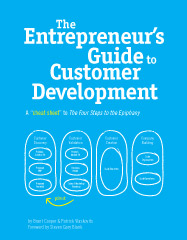
The Federal Economic Development Agency for Southern Ontario announced a new Investing in Business Innovation program. The program offers matching for early-stage venture funding. This is a $190MM running from 2010-2014.
There are provisions for startups and angel networks. Since we’re StartupNorth, let’s try to deal with the startup side first.
- Startups who receive a termsheet from a qualified angel investor (as defined by the Ontario Securities Commission) or venture capital firm (registered with the Canadian Venture Capital association) are eligible to apply for up $1MM in loan from the federal government.
- Restrictions:
- Start-up businesses will be eligible for repayable contributions up to $1 million for no more than one third (33? percent) of total eligible and supported project costs.
- An angel and/or venture capital investor(s) must be committed to provide at least two thirds (66? percent) of the cash contribution toward eligible and supported project costs.
- In-kind contributions related to mentoring, networking, and other business skills cannot be considered as part of the angel or venture capital investor’s cash contribution.
- A maximum of one project per eligible start-up SME can be funded under the initiative.
- Direct eligible costs for start-up businesses may include:
- Labour, capital and operating expenditures;
- Materials and supplies;
- Consulting and/or professional fees (limited to market rate); and,
- Minor and non-capital acquisitions (e.g., software).
- All project activities must be completed by March 31, 2014;
Basically there is federal government matching loans up to $1MM for startups that are raising angel or venture funding in Southern Ontario. This is a fantastic start.
It’s great for startups in Southern Ontario, it’s curious that the program is only available in Southern Ontario. Why not all of Canada? How are the repayment terms set? Is this a zero percent interest loan from the Federal Government? Does the term sheet have to be equity investment? Is convertible debt eligible? How do startups “demonstrate they are using business mentoring, counseling, or related services”?




